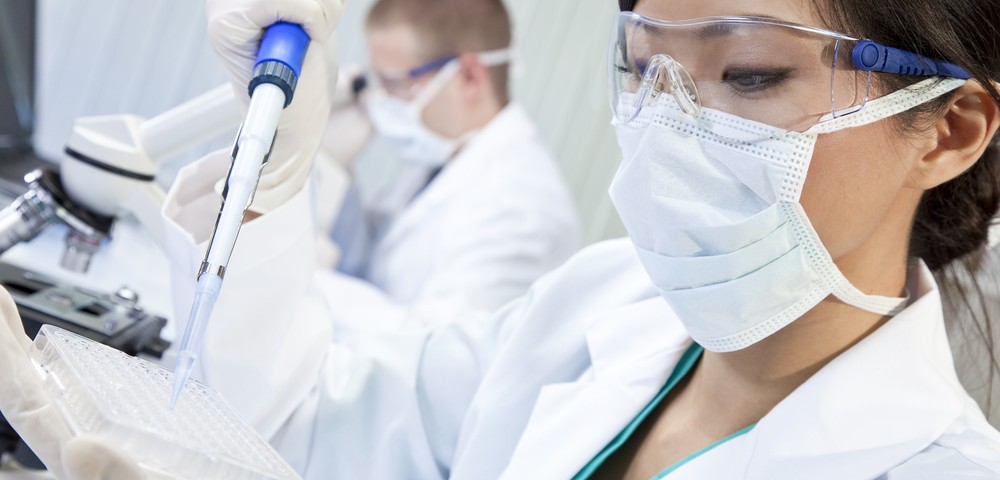North Chicago, Illinois-based AbbVie, in cooperation with Neurocrine Biosciences of San Diego, California, has announced the start of the first of two planned Phase 3 clinical studies to evaluate the safety and efficacy of their jointly-developed drug candidate elagolix.
Another study, “A Global Phase 3 Study to Evaluate the Safety and Efficacy of Elagolix in Subjects With Moderate to Severe Endometriosis-Associated Pain,” is ongoing, but not recruiting participants.
An AbbVie release explains that these trials are designed to assess change in menstrual blood loss utilizing the alkaline hematin method, comparing baseline data to the sixth month of treatment. Additional secondary efficacy endpoints being evaluated include assessing changes in fibroid volume, monthly blood loss and hemoglobin levels. Bone mineral density will also be assessed.
“There are limited, non-surgical treatment options for women suffering from heavy menstrual bleeding associated with uterine fibroids. AbbVie is eager to further explore elagolix’s potential to address this unmet need,” Michael Severino, M.D., AbbVie’s executive vice president of research and development and chief scientific officer, said in the release.
Elagolix is a novel, orally administered formulation of gonadotropin-releasing hormone antagonist, or GnRH antagonist. Researchers believe elagolix works by altering the level of pituitary GnRH suppression and, as a result, titrating circulating estrogen levels. By this method, it is believed that elagolix will provide relief from the pain associated with conditions such endometriosis and uterine fibroids without a need to actively manage bone loss.
To date, Elagolix has been studied in more than 40 clinical trials totaling more than 3,000 subjects, including patients with endometriosis and uterine fibroids, and with Phase 3 trials of elagolix currently ongoing for management of endometriosis-associated pain.
Endometriosis
According to The World Endometriosis Research Foundation (WERF), endometriosisis is a disorder in which tissue similar to the lining inside the uterus (the endometrium) is found outside the uterus where it induces a chronic inflammatory reaction that may result in scar tissue. Endometriosis is primarily found on the pelvic peritoneum, on the ovaries, in the recto-vaginal septum, on the bladder, and in the bowel.
Endometriosis is associated with an array of symptoms. The most common is pain, related both to menstruation (dysmenorrhea) as well as chronic pelvic pain throughout the menstrual cycle. The condition is a leading cause of infertility. WERF estimates that endometriosis affects an estimated one in 10 women during their reproductive years — usually between the ages of 15 and 49. It calculates 176 million women worldwide suffer from the condition, with annual related costs estimated to exceed $20 billion in the U.S. alone.
There is no known cure and, although endometriosis can be treated effectively with drugs, most treatments are not suitable for long-term use due to side effects. WERF notes that surgery can be effective to remove endometriosis lesions and scar tissue, but success rates depend on the extent of disease and the surgeon’s skills.
“The investigation of endometriosis is an important step in the exploration of potential treatments for this underserved patient population,” said Rita Jain, M.D., divisional vice president of Abbott’s Pain, Respiratory and Metabolic Development, Global Pharmaceutical Research and Development, when the elagolix clinical trials program was announced in 2012.
Uterine Fibroids
According to an American Congress of Obstetricians and Gynecologists Frequently Asked Questions about Gynecologic Problems Uterine Fibroid fact sheet, uterine fibroids (also called leiomyomas or myomas) are noncancerous muscle tissue tumors of the uterus that are most common in women age 30 to 40, but can occur at any age. Uterine fibroids can range in size from nearly undetectable to bulky masses that can distort the uterus. They can be asymptomatic but in some women cause symptoms that can include longer, more frequent, or heavy menstrual bleeding; menstrual pain; vaginal bleeding at times other than menstruation; pain in the abdomen or lower back; pain during sex; difficulty urinating; frequent urination; constipation or rectal pain.
Neurocrine Biosciences notes that several GnRH agonists have been developed based on this principle, but there are limitations, including those that must be injected; can have a delayed therapeutic effect; and are often associated with undesirable side effects like hot flashes and decreased bone mineral density. They agree that elagolix is aimed at addressing these limitations.
In June 2010, Neurocrine Biosciences announced an exclusive collaboration with AbbVie to develop and commercialize elagolix and all next-generation GnRH antagonists (collectively, GnRH compounds) for women’s and men’s health. Under the terms of Neurocrine’s agreement with AbbVie, the two companies will work jointly to advance GnRH compounds toward commercialization.
Abbott (AbbVie’s former name) made an upfront payment of $75 million and agreed to make additional development and regulatory event-based payments of up to $480 million and up to an additional $50 million in commercial event-based payments.
The Elagolix Phase 3 uterine fibroid clinical development program is part of AbbVie’s product pipeline and includes two replicate, randomized, parallel, double-blind, placebo-controlled clinical trials. Each trial is expected to enroll roughly 400 subjects for an initial six-month placebo-controlled dosing period, after which subjects who are eligible will have an option to continue for an additional six-month dosing period in a safety and efficacy extension study.
A second pivotal Phase 3 study is planned with an NDA filing targeted for sometime in 2016.

